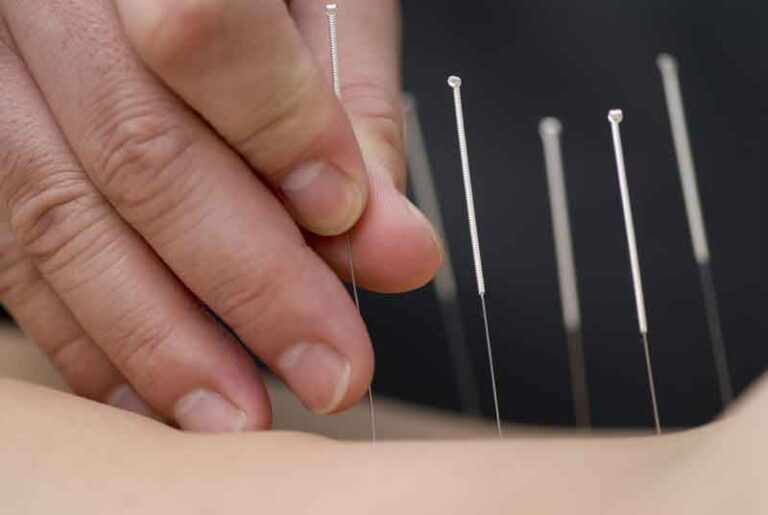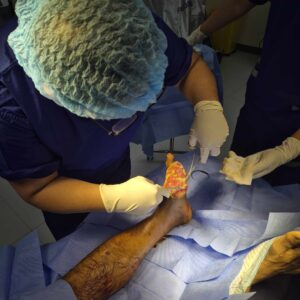Dry needling treatment is a specialized therapy used to relieve muscle pain and tension by targeting specific trigger points. Unlike acupuncture, which is based on traditional Chinese medicine and energy flow, dry needling focuses on releasing tight knots in the muscle through modern medical science. The process involves inserting thin, sterile needles directly into myofascial trigger points, which are areas of muscle that have become stiff and painful due to overuse, injury, or stress. By stimulating these points, the therapy helps muscles relax, improve blood flow, and reduce inflammation. Dry needling is commonly used to treat conditions such as neck and back pain, shoulder injuries, tendonitis, and chronic muscle stiffness. It is also effective for people recovering from sports injuries or post-surgical rehabilitation. Patients often notice improvements in pain and mobility after just a few sessions, making it a practical option for ongoing muscle care.
Benefits of Dry Needling Treatment
Dry needling treatment in Fishers offers numerous benefits for individuals experiencing muscular discomfort or restricted movement. One of the most significant advantages is pain relief, as targeting trigger points helps reduce chronic and acute discomfort. The therapy also enhances flexibility and range of motion by loosening tight muscles and promoting natural healing. For athletes and active individuals, dry needling can accelerate recovery from injuries and prevent recurring strains. The therapy also helps reduce muscle spasms and improves posture, which is beneficial for people with sedentary lifestyles or physically demanding jobs. In addition, dry needling stimulates blood flow, which delivers essential nutrients to affected areas and supports tissue repair. Patients may notice a reduction in stiffness, improved overall movement, and a greater sense of physical well-being after treatment.
What to Expect During a Dry Needling Session
A typical dry needling session begins with a thorough assessment by a licensed practitioner to identify areas of muscle tension and pain. The practitioner may ask questions about your medical history, current symptoms, and activity levels to create a personalized treatment plan. During the procedure, fine needles are inserted into the muscle trigger points with precision, targeting areas of tightness and discomfort. Most patients report a brief twitch or slight tingling sensation when the needle penetrates the muscle, followed by a feeling of relaxation in the treated area. Each session usually lasts between 20 to 45 minutes, depending on the number of areas being treated. Frequency of sessions varies based on the severity of the condition, with many patients benefiting from weekly or bi-weekly treatments. After the session, mild soreness or tenderness may occur, which generally resolves within a day or two.
Safety and Precautions
Dry needling is considered safe when performed by licensed and experienced practitioners. Minor side effects, such as temporary soreness, bruising, or slight fatigue, are common and usually resolve quickly. It is important for patients to inform their provider of any medical conditions, including bleeding disorders, nerve issues, or skin infections, as these may affect treatment suitability. Pregnant women and individuals with certain heart conditions or infections may need special consideration before undergoing therapy. Proper hygiene, sterilization, and professional technique are essential to minimize risks and ensure effective treatment. Patients should follow any pre- or post-treatment instructions, such as gentle stretching or hydration, to support the healing process. Choosing a reputable clinic in Fishers ensures that safety standards are maintained while delivering the maximum benefit of the therapy.
Combining Dry Needling with Other Therapies
Dry needling is often most effective when combined with complementary therapies for holistic muscle care. Physical therapy exercises can enhance the results by improving strength, mobility, and posture. Massage therapy can also be used alongside dry needling to further relax tight muscles and improve circulation. Chiropractic adjustments may help align joints and relieve stress on affected muscles. Lifestyle and nutritional considerations, such as proper hydration, balanced diet, and ergonomic practices, can enhance recovery and prevent future injuries. Many patients experience faster improvement when these approaches are integrated, as dry needling addresses the root cause while other therapies support overall muscle health. A coordinated approach allows practitioners to create a treatment plan tailored to each patient’s needs, promoting long-term relief and functional improvement.
Finding the Right Dry Needling Clinic in Fishers
Choosing the right clinic is crucial for effective dry needling treatment. Look for licensed practitioners with specialized training and experience in myofascial pain and trigger point therapy. It is beneficial to ask questions about their techniques, session frequency, and expected outcomes. Clinics that offer personalized treatment plans based on thorough assessments tend to deliver better results. Check reviews, certifications, and professional affiliations to ensure credibility. Accessibility, clinic environment, and the availability of follow-up care are also important considerations. A patient-centered clinic prioritizes communication, comfort, and tailored treatments, creating a positive experience for individuals seeking relief from muscle pain. Selecting the right clinic in Fishers ensures that you receive safe, effective, and reliable care.
Frequently Asked Questions (FAQ)
Is dry needling painful?
Dry needling may cause mild discomfort or a brief twitch when the needle penetrates the muscle, but most patients report it is tolerable and followed by relief.
How many sessions are usually needed?
The number of sessions depends on the severity of the condition, typically ranging from 3 to 6 sessions, with some patients requiring ongoing maintenance.
Can dry needling treat sports injuries effectively?
Yes, dry needling targets trigger points and tight muscles, making it highly effective for sports injury recovery and improving performance.
What is the difference between dry needling and acupuncture?
Acupuncture is rooted in traditional Chinese medicine and focuses on energy pathways, while dry needling targets medical trigger points in muscles for pain relief and functional improvement.
Are there risks or side effects?
Common side effects include mild soreness, bruising, or temporary fatigue. Serious complications are rare when performed by a licensed professional.
How quickly can I expect results?
Some patients notice immediate relief after the first session, while others experience gradual improvement over several treatments.
Takeaway
Dry needling treatment in Fishers offers an effective solution for muscle pain, stiffness, and injury recovery. With benefits ranging from pain relief to improved flexibility and posture, it addresses both acute and chronic conditions. Sessions are typically safe, well-tolerated, and can be enhanced when combined with physical therapy, massage, or chiropractic care. Choosing a qualified and patient-focused clinic ensures the best outcomes. With consistent treatment and proper follow-up care, individuals in Fishers can regain mobility, reduce discomfort, and improve overall quality of life through dry needling therapy.






